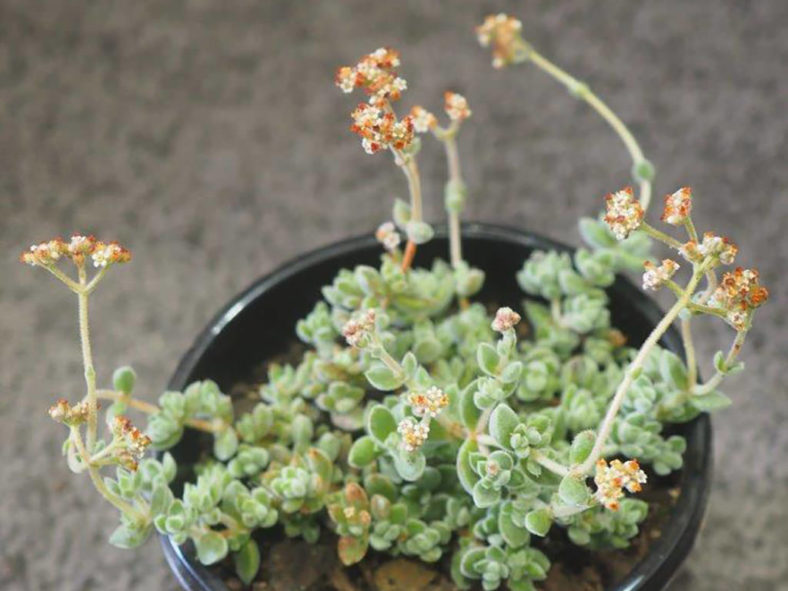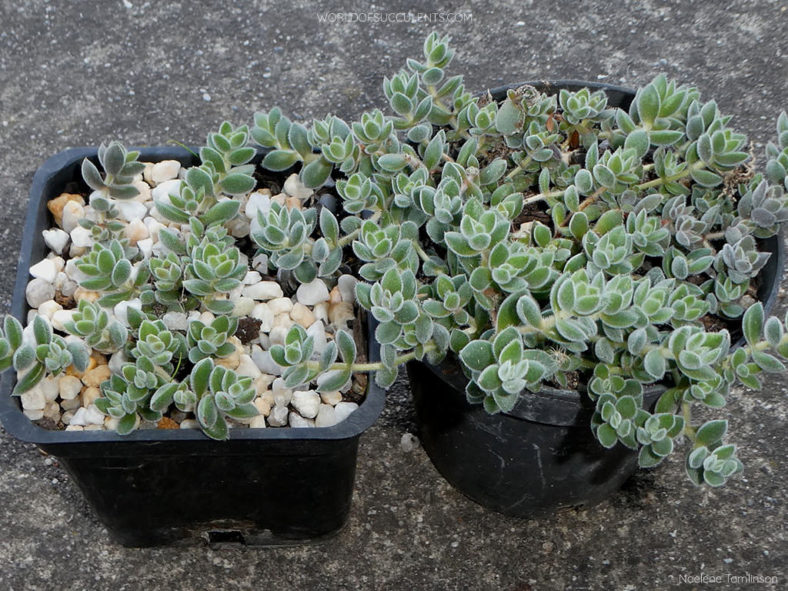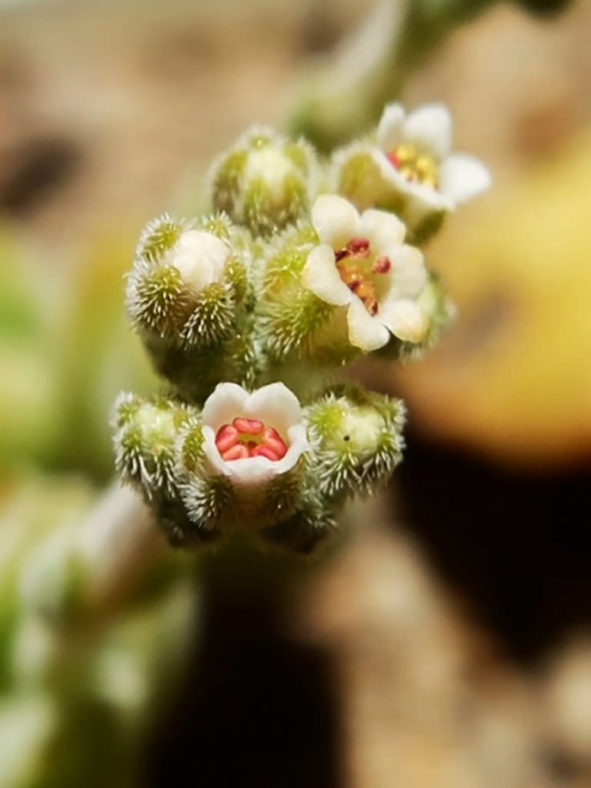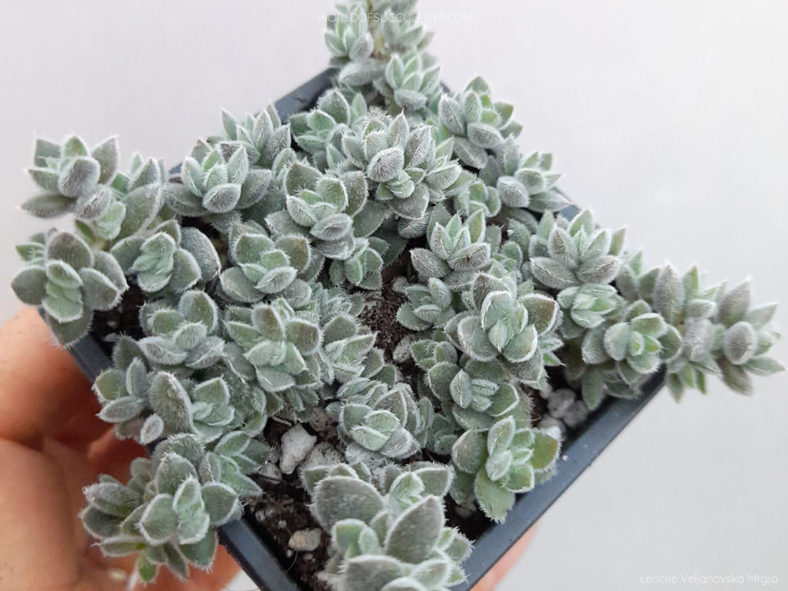Scientific Name
Crassula lanuginosa var. pachystemon (Schönl. & Baker fil.) Toelken
Synonym(s)
Crassula cathcartensis, Crassula ernestii, Crassula pachystemon
Scientific Classification
Family: Crassulaceae
Subfamily: Crassuloideae
Genus: Crassula
Etymology
The varietal epithet "pachystemon (pak-ee-STEE-mon)" means "thick stamen" and refers to the flowers with stout stamens.
Origin
Crassula lanuginosa var. pachystemon is native to South Africa. It occurs in crevices on rock outcrops and often among boulders in the northern parts of the Eastern Cape province, but usually slightly further south than Crassula lanuginosa var. lanuginosa, mainly between Graaff-Reinet, Somerset East, and Queenstown (officially Komani).
Description
Crassula lanuginosa var. pachystemon is a small succulent with prostrate to decumbent branches with hairy leaves and internodes usually visible. The branches can grow up to 6 inches (15 cm) long. The leaves are elliptic to obovate, flattened to somewhat convex on both surfaces, usually obtuse to rounded or rarely acute at the apex, covered with recurved and more or less adpressed hairs, and cilia usually longer along margins. They can measure up to 1.2 inches (3 cm) long and 0.4 inches (1 cm) wide.
The inflorescence with 7 to 15 white to cream-colored, sessile or almost sessile flowers appears in winter and early summer.
Usually, the two varieties of Crassula lanuginosa can be distinguished by the size of the leaves. Crassula lanuginosa var. lanuginosa has smaller, lance-shaped leaves with sharply acute apex and long apical cilia.

How to Grow and Care for Crassula lanuginosa var. pachystemon
Light: C. lanuginosa var. pachystemon prefers full sun to partial shade. However, intense afternoon sun in the hottest period of summer can burn the leaves of the plant. Therefore, a place with morning sun and afternoon shade would be perfect. Indoors, place your plant in a window that receives at least 6 hours of direct sunlight.
Soil: This plant is not particular about soil pH but requires very porous soil with excellent drainage. Use commercial potting soil mixes designated for succulents, or mix your own.
Temperature: Like most Crassulas, this succulent will tolerate short-term freezing, but extremes of cold or heat will cause it to lose leaves and die. C. lanuginosa var. pachystemon can withstand temperatures as low as 25 °F (-3.9 °C). USDA Plant Hardiness Zones 9b to 11b, 25 to 50 °F (-3.9 to 10 °C).
Watering: Avoid overwatering using the "soak and dry" method, where the soil is soaked with water, slowly drained, and left to dry out before watering again. Reduce watering in winter. Potted plants require more frequent watering than those in the ground.
Fertilizing: C. lanuginosa var. pachystemon does not need much feeding but will benefit from a small amount of organic fertilizer in mid-spring when it starts actively growing.
Repotting: Repot as needed, preferably in spring, at the beginning of the active growth period. Make sure the soil is dry before you begin repotting.
Propagation: This succulent is generally started by leaves or stem cuttings. It can also be grown from seeds and offsets. The easiest way is to propagate C. lanuginosa var. pachystemon from a single leaf while using stem cuttings is the fastest way to get a decent-sized plant. These processes are most successful at the beginning of the plant's active growth period. Sow the seeds in the spring or summer. Propagating by dividing offsets is easy because the parent plant has already done most of the work for you.
Learn more at How to Grow and Care for Crassula.
Toxicity of Crassula lanuginosa var. pachystemon
C. lanuginosa var. pachystemon is nontoxic to people and pets.
Forms and cultivars of Crassula lanuginosa var. pachystemon
Links
- Back to genus Crassula
- Succupedia: Browse succulents by Scientific Name, Common Name, Genus, Family, USDA Hardiness Zone, Origin, or cacti by Genus
Photo Gallery
Click on a photo to see a larger version.


